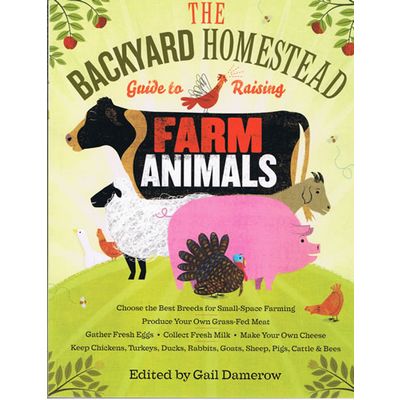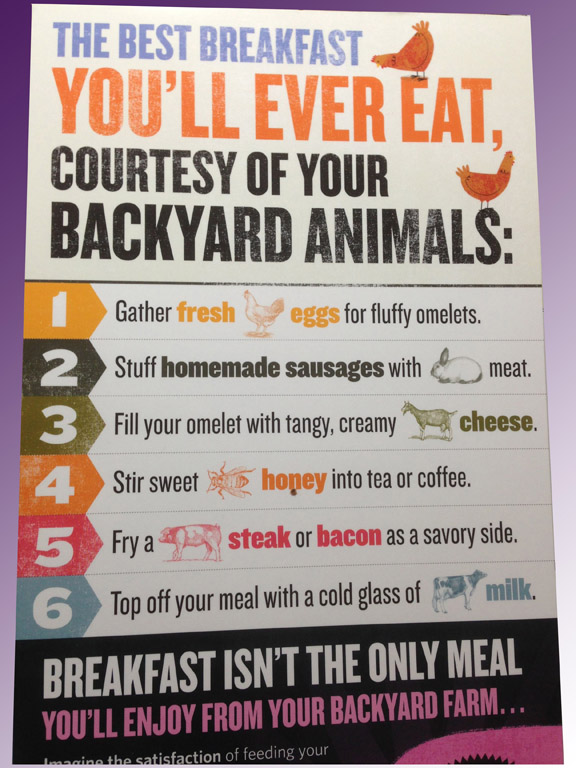
Folks in the cities and the suburbs: You’re going to want to do one thing before you read The Backyard Homestead Guide to Raising Farm Animals: check the regulations in your area to see what animals you can have in your municipality.
After you read Backyard Homestead, you’ll be ready to get your own animals, and you’re not going to want to wait.
Gail Damerow’s synopsis of what to do, when to do it, and what to expect when raising stock on a small lot is fantastic.
Each section is organized by animal, with useful discussions of breeds, temperaments and care required. Even armchair livestock farmers will enjoy this book. At 353 well-indexed pages, you’ll feel absolutely ready to raise all the animals covered, including:
- chickens
- turkeys
- sheep
- goats
- pigs
- ducks
- rabbits
- bees
- diary cows

The back cover is wonderful example of the book’s tone and organization. It’s easy to see how keeping just a few small animals could improve your family’s food drastically, and put you on the road to food independence.
How complete is the discussion for each animal? As an average example, take her section on chickens, which covers over 40 pages:
- Getting Started
- Choosing The Right Breed (covers heirlooms, layers, meat and dual-purpose breeds)
- Raising Chicks
- Raising Broilers
- Egg Production (including laying and brooding problems)
- Housing a Flock (discusses chicken tractors, permanent coops and more)
- Feeding Chickens (covers table scraps, organic feeds, and free-ranging)
- Chicken Health (addresses most common problems)
The only thing that Damerow doesn’t cover is animal harvest. She does recommend resources, though, so the hardcore ‘do it yourself’ farmers can completely manage their animals. The main focus is all about raising the animals and keeping them healthy. Damerow shares ideas and recommendations on every stage of livestock life.
Preventive care is a big focus for Damerow: common sense practices like keeping bedding clean, cleaning pens regularly, keeping an eye on eyes and feet– where signs of distress often show first. Home treatments are covered, but most importantly, she points out when to call the vet, and why you shouldn’t hesitate to call.
I look forward to having chickens and goats, and when I do, this book will definitely be on my bookshelf (along with Damerow’s Storey’s Guide to Raising Chickens). Her advice is sound, well-written, and a great resource for the beginning or experienced small farmer.




























